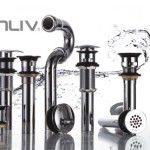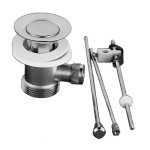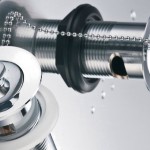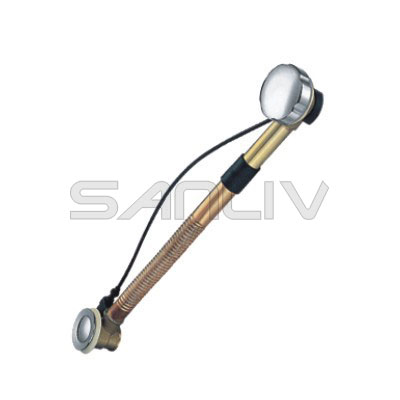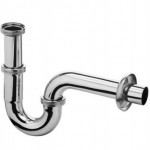After the sink and faucet are installed, it’s time to install the pop-up waste assembly and connect everything to the plumbing drain pipe system. Though there are plastic pop-up waste assemblies, the better ones are made of brass and come in a number of designs. They are usually included with the faucet, though often you have the option of substituting a different pop-up. A snake of plumber’s putty should be wrapped around the seat flange before setting it in place in the drain opening. Also, another snake of putty should be placed on top of the beveled gasket that makes contact with the underside of the sink before tightening everything. Pipe dope should be used on the female threads of the pop-up body where the tailpiece screws into it. After the pop-up body is in place, the arm and lift strap can be assembled.
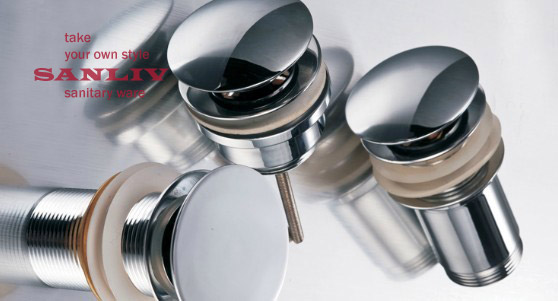
The trap connects the l-1/4-in. tailpiece from the sink to the sanitary tee of the DWV system, which is typically 1 1/2 in. or 2 in. in diameter. Traps are made of either plastic or brass and consist of a bewildering array of parts to make this seemingly simple connection. I have a box full of slip nuts, increasing adapters, P-traps in various sizes, and union nuts, yet it always seems that I don’t have the specific part that I need whenever I have to hook up one of these Rube Goldberg-like contraptions.
Plastic traps depend on cemented joints and a union nut, which connect the P-trap to the trap arm. Avoid the thin-wall plastic traps and stick with Schedule 40 ABS or PVC pipe, which are more rigid and less likely to flex and fail. The trick in fitting plastic systems is getting the trap riser and trap arm lengths correct, so some dry assembly will be necessary to check alignment before cementing the parts together. While a l 1/2-in. trap meets code and doesn’t require a reducer, a 2-in. trap is less likely to clog up.
Tubular-brass traps look more elegant than plastic and should be used in exposed locations. Connections are made with slip nuts and slip-nut washers, and getting the trap arm and trap riser lengths right is also tricky. Often an extension is needed on the factory tailpiece to reach the P-trap. While an extension with a belled opening that slides up over the existing tailpiece is available, I think that threaded extensions between 6 in. and 12 in. long make a more secure connection. After all, they aren’t called “slip joints” for nothing.
Any faucet should be flushed out after it has been installed to rid the supply lines of sediment. Unscrew the aerator first, turn the water flow on, and let it run for a few minutes before adjusting temperature or volume. This helps particles to flush out before they have a chance to grind against valving surfaces.
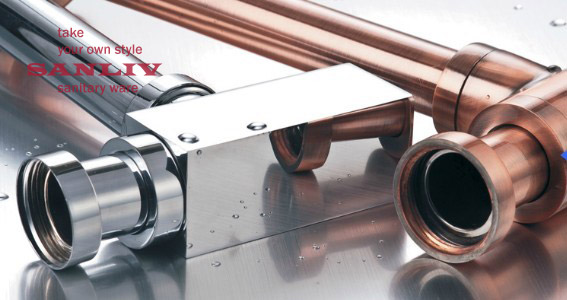
Bathrooms can be quirky places and full of finicky details, so normal finishing sequences that work in other parts of the house might be turned topsy-turvy here. For example, I usually like to paint walls as late in the construction process as I can to keep them from being marred. In a bathroom, though, walls typically get painted before the toilet is installed in order to ensure that the area behind the tank gets painted. So the steps in finishing up a bathroom that are presented aren’t necessarily done in a particular order. That will be dictated by the requirements of the job and the availability of specialty contractors.


